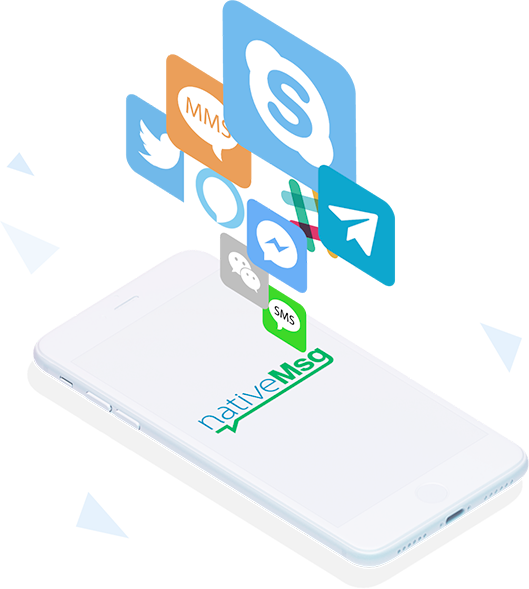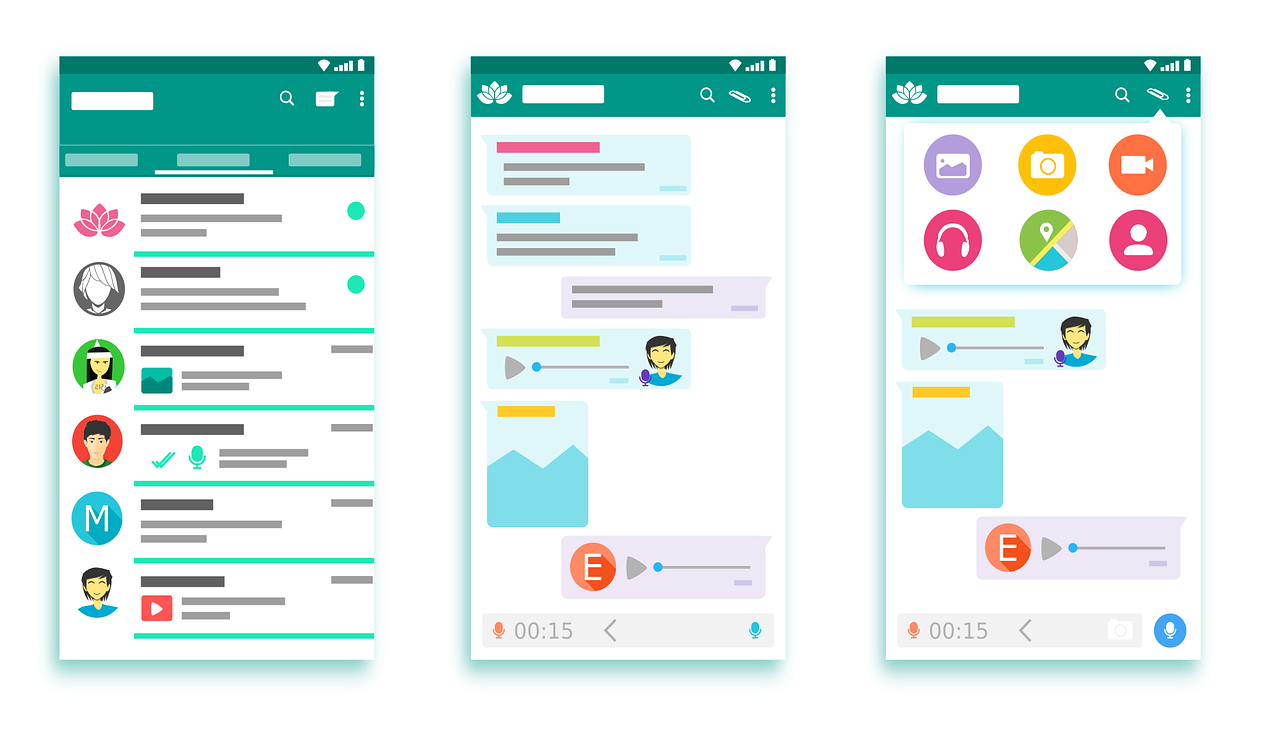
What is intelligent messaging? How can your business successfully implement it to simplify your omnichannel approach, and how can you make sense of it for your engagement goals?
Intelligent messaging, at its core, is upgraded personalization and streamlined deployment.
Intelligent messaging, at its core, is upgraded personalization and streamlined deployment.
Yet, businesses are still a far cry from perfecting that (awesomely satisfying) 1:1 personalization a consumer wants: 33% of businesses have little to no capabilities to personalize, and 85% of marketers complain that they’re segments are too broad.
That’s just too great a disconnect with the solutions that are available to every business now.
Let’s look at what intelligent messaging is. You’ll get the right data to focus on, and where and how to execute it, so that your business can begin to sail away from those bleak stats––to brighter waters.
Why Intelligent Messaging for Business?
If consumer engagement statistics could speak, they’d be practically begging businesses to take action now.
- 65% of digital media time is via mobile engagement.
- Gartner predicts that in the next few years, siloed messaging channels will be one of the top three customer peeves.
The fact: the messaging revolution has begun.
Today, businesses need to know how to strategize for it. It is no longer simple push notifications or automated appointment reminders or promotions (though those tactics are still high engagers).
Intelligent messaging simplifies reach and boosts customized experiences. It is the route to straddling multiple platforms, such as social media and native text apps, most efficiently. Instead of siloed approaches to reaching customers on Facebook, on-site or by text, marketers and businesses can manage and deploy intelligent messaging technology across these messaging channels. Create one message and continue to personalize it for how your customers interact with you and in a particular space, or create multiple messages (for the same customers or to engage new ones) that are personalized for each space. Pretty cool.
This approach creates messaging as a platform MaaP, a concept those in the messaging space have termed as the main engagement “superhighway” for both users and businesses.
Fact: The Messaging Revolution has begun. If consumer engagement statistics could speak, they’d practically be begging businesses to take action now. More ways you can get started, here!
To create that impeccable 1:1 personalization you’re really after, you’ll need to use a mix of data cues from analytics, messaging platform features and customer interactions. The frustration comes in how to decipher that magic mix of data and execution.
Intelligent Messaging: Essential Tools
First, execution does vary; but intelligent messaging encapsulates everything from chatbots driven with AI to well-executed automated messaging. It also includes the channels to deploy it, coupled with other AI tools apart from chatbots, like those for data science, analytics and AI itself.
Intelligent messaging analytics helps you gather intel to make sense of customer engagement, engagement signals and device usage.
This can feel like a lot of strategy merging with a whole lot of data. But it’s easiest to deconstruct the basic elements:
- Business Messaging Channels
- Device (predominantly mobile messaging)
- AI
- Automation
Business Messaging Channels:
Any messaging space where you can deploy a messaging app, AI-based or otherwise, is an inroad to intelligent messaging. But the great great part is, nowadays, most messaging apps are beginning to cater to business branding.

Social platforms have entered the business messaging space and more and more have rolled out features in the last few years. Most every social site has features to gain greater B2C engagement via messaging.
In the last year, major social sites have all extended their business messaging features:
Facebook Messenger has offered chatbot building capabilities since 2016. At the end of 2017, it rolled out “Discover” to better connect customers to business and brands of their interest.
Twitter also released updates to their DM at the tippy-end of 2017, allowing brands to automate welcome messages and to personalize messaging with more clearly defined rep versus bot experience.
Slack allows for integration with other channels, such as email, so employees and help desk reps can reply from within the site to customer messages.
WhatsApp for Business now offers branded features and increased customer access for brands.
Kik allows for integration of chatbots and third party messaging features. In the last year, Kik has offered video chat for users–a strategy businesses can harness; likewise, Gartner estimated that 100 of the 500 largest global businesses will introduce video-based chat by 2018 for customer-facing interactions.
Intelligent Messaging for Every Device
Mobile: Apart from apps, text messaging is the most direct and influential space to deploy intelligent messaging. Rich Communication Services messaging (RCS messaging) is giving businesses a new messaging channel to do that by delivering rich messaging features for branded, personalized experience to consumers.
Want to learn more about intelligent messaging with RCS? Check out how RCS works and how to get started using it: RCS Business Messaging
Desktop: Google also recently offered direct desktop text messaging capabilities with Android Messages. This feature, combined with RCS Business Messaging, is a hyper-direct route to drive intelligent messaging to consumers. Google has relayed that as of now, conversations, contacts and additional settings will be encrypted on consumers’ browsers. That feature is a boon to consumer engagement and perhaps confidence that consumers can provide personal information more securely. To get started, businesses can direct campaigns to returning customers who are also Android Messages users. Remember, consumers want to text with you, and businesses do see higher engagement numbers. A flexible branded experience with RCS messaging, which can also combine conversational AI, is an engagement strategy that can really be fun, interesting and satisfying for your loyal customers.
Utilizing Automation for Intelligent Messaging
To gain traction in personalization, automation is a must.
The key to intelligent messaging is a dedicated platform that centralizes every component: automation, analysis, customer interactions and deployment across channels your customers use. It opens the door to extreme personalization. So, you can create and deploy messages to Facebook, Kik, Twitter, native text apps and more all within a messaging platform to get real-time analytics and conversation exchanges.
Here’s some examples of businesses using intelligent messaging, or making a beginning in it, with success.
Examples of Intelligent Messaging Brand Success
SuperGoop

Successful sunblock company, SuperGoop, started by recognizing the key channel their demographic engaged on: mobile. They revamped their site to be mobile-friendly and optimized in the extreme for mobile enagement, then took their own analytics data insights to determine what, who and how to message by text. Their automated texting strategy has garnered them 10 times higher rates of subscribers than email.
They’ve begun by sending promotions and discount codes, then continue to personalize based on customer engagement and purchasing behaviors.
KLM Royal Dutch Airlines

KLM Royal Dutch Airlines has been one of the first companies on the scene to make use of chatbots. But they’ve also led the way in showing how you can get started in one space and make use of business messaging in that space, to propel intelligent messaging strategies.
They engaged their frequent fliers on WhatsApp to gather information on booking and seating preference feedback.
Intelligent messaging doesn’t have to start with a complex array of channel management and campaigns. You can see how the company is now able to grab more insight data while also showing loyal flyers that they’re taking their feedback and preferences into consideration.
How Can You Execute Intelligent Messaging?
The main benefit of intelligent messaging is to humanize the customer experience for greater customer satisfaction. The best place to start? With your most loyal customers, who, data shows, comprise the largest revenue base and potential for businesses.
The main benefit of intelligent messaging is to humanize the customer experience for greater customer satisfaction. The best place to start? With your most loyal customers, who, data shows, comprise the largest revenue base and revenue potential for businesses.
How to start: Start with the broadest general pain point, like 24/7 responsiveness. Or, if there’s a glaring pain point or opportunity, like Supergoop’s demographic “aha” in text messaging engagement, begin there.
You’d be surprised how many businesses intend to be more responsive but could offset this very easily with intelligent automated messaging, just on Facebook or Twitter alone (most don’t use this feature at all!). With an intelligent messaging platform, your repeat customers can experience one of the simplest yet satisfying responses as in: “Welcome back (insert name), do you want to pick up where you left off?”or, “Welcome back (insert name), how did you enjoy your (insert product)?”
Technical integration: Again, use a platform that allows you to design, launch and manage messaging across channels. If this isn’t feasible right away, grab all the easy-to-use features social messaging apps offer in either building chatbots directly or automating simple, general requests.
As you continue getting familiar with intelligent messaging, you’ll be able to gain traction in achieving the extreme personalization that was, once upon a time, the common customer experience before digital and large retail moved in.
Intelligent messaging revives that experience, where sales people, both bots and humans, know your name, recall your preferences (and put-offs) and offer “just the thing” with you in mind.
Schedule a demo of the nativeMsg conversational AI platform or sign-up for the nativeMsg email newsletter to get actionable content on intelligent messaging for your business.
Free Trial
Get Started With RCS
Business Messaging!
Unlock the power of RCS and revolutionize your customer engagement.


